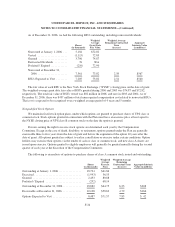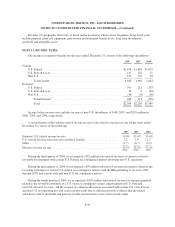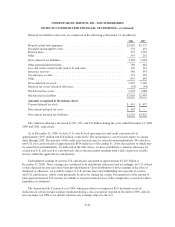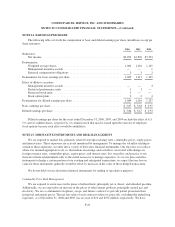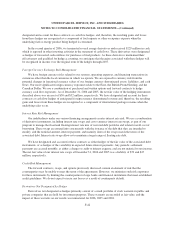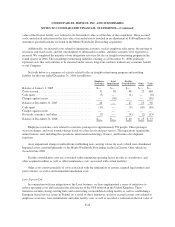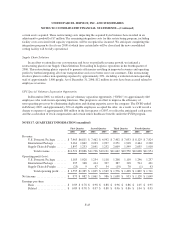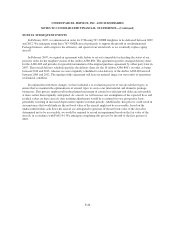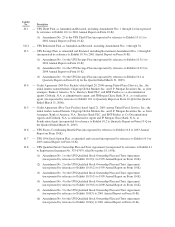UPS 2006 Annual Report Download - page 103
Download and view the complete annual report
Please find page 103 of the 2006 UPS annual report below. You can navigate through the pages in the report by either clicking on the pages listed below, or by using the keyword search tool below to find specific information within the annual report.UNITED PARCEL SERVICE, INC. AND SUBSIDIARIES
NOTES TO CONSOLIDATED FINANCIAL STATEMENTS—(Continued)
Income Effects of Derivatives
In the context of hedging relationships, “effectiveness” refers to the degree to which fair value changes in
the hedging instrument offset corresponding changes in the hedged item. Certain elements of hedge positions
cannot qualify for hedge accounting under FAS 133 whether effective or not, and must therefore be marked to
market through income. Both the effective and ineffective portions of gains and losses on hedges are reported in
the income statement category related to the hedged exposure. Both the ineffective portion of hedge positions
and the elements excluded from the measure of effectiveness were immaterial for 2006, 2005 and 2004.
As of December 31, 2006, $111 million in pre-tax gains related to cash flow hedges that are currently
deferred in OCI are expected to be reclassified to income over the 12 month period ending December 31, 2007.
The actual amounts that will be reclassified to income over the next 12 months will vary from this amount as a
result of changes in market conditions. No amounts were reclassified to income during 2006 in connection with
forecasted transactions that were no longer considered probable of occurring.
At December 31, 2006, the maximum term of derivative instruments that hedge forecasted transactions,
except those related to cross-currency interest rate swaps on existing financial instruments, was 2 years. We
maintain cross-currency interest rate swaps that extend through 2009.
Fair Value of Financial Instruments
At December 31, 2006 and 2005, our financial instruments included cash and cash equivalents, marketable
securities and short-term investments, accounts receivable, finance receivables, accounts payable, short-term and
long-term borrowings, and commodity, interest rate, foreign currency, and equity options, forwards, and swaps.
The fair values of cash and cash equivalents, accounts receivable, and accounts payable approximate carrying
values because of the short-term nature of these instruments. The fair value of our marketable securities and
short-term investments is disclosed in Note 2, finance receivables in Note 3, and debt instruments in Note 8.
NOTE 16. RESTRUCTURING COSTS
In connection with recent acquisitions and integration initiatives, we have incurred restructuring costs
associated with the termination of employees, facility consolidations and other costs directly related to the
restructuring initiatives implemented. These costs have resulted from the integration of our Menlo Worldwide
Forwarding and Lynx acquisitions as well as restructuring activities associated with our Supply Chain Solutions
operations. For specific restructuring costs recognized in conjunction with the cost from acquisitions, we have
accounted for these costs in accordance with EITF 95-3, “Recognition of Liabilities Assumed in Connection with
a Purchase Business Combination.” All other restructuring costs have been accounted for in accordance with
SFAS No. 146, “Accounting for Costs Associated with Exit or Disposal Activities” and SFAS No. 144,
“Accounting for the Impairment or Disposal of Long-Lived Assets.”
Menlo Worldwide Forwarding
In February 2005, we announced our intention to transfer the heavy air freight operations at our facility in
Dayton, Ohio (acquired with the operations of Menlo Worldwide Forwarding in December 2004) to other UPS
facilities over approximately 12 to 18 months. This action was taken to remove redundancies between the Dayton
air freight facility and existing UPS transportation networks, and thus provide efficiencies and better leverage the
current UPS infrastructure in the movement of air freight. During the third quarter of 2005, we finalized our
plans to exit the Dayton facility, as well as various other acquired facilities, and accrued certain costs related to
employee severance, lease terminations, and related items. As part of this restructuring program, the recorded
F-43



